Scientists have succeeded in unraveling the mystery -- at the protein structure level -- of the mechanism at work in the glowing tail of the "Genji firefly" (Luciola cruciata Motschulsky), which is considered to have the highest luminous efficiency of any known source of light. The results of the joint research carried by the Institute of Physical and Chemical Research (RIKEN) and Kyoto University are to be published in the March 16 edition of the British science journal Nature.

By tinkering with the chemical composition of luciferase (a bioluminescent enzyme), the research team succeeded in changing the emission color from its normal greenish-yellow to orange and red. Researchers are now attempting to recreate the blue glow of the sea firefly (Vargula hilgendorfii) and firefly squid (Watasenia scintillans) in order to have all three primary colors at their fingertips.
"This might prove useful in applications such as short-term emergency lighting when no source of electricity or combustion is available," says Kyoto University professor Hiroaki Kato. "Light could be created by mixing up a liquid protein solution."
Anytime energy is converted into light, there is some loss due to heat. Luminous efficiency is a measure of the proportion of energy supplied to a light source that is effectively converted into visible light energy (i.e. the amount not lost to heat or infrared radiation). The luminous efficiency of incandescent light bulbs is around 10%, while fluorescent light is around 20% and LED is around 30%. Firefly tails are significantly higher, at 90%. Scientists were aware that the Genji firefly used luciferase in combination with luciferin (a light-emitting substrate) and adenosine triphosphate (ATP) to produce light, but the detailed workings of the mechanism have until now remained a mystery.
[Sources: Jiji, RIKEN press release]

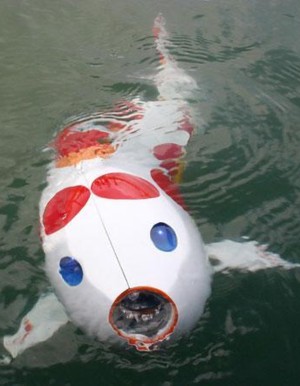
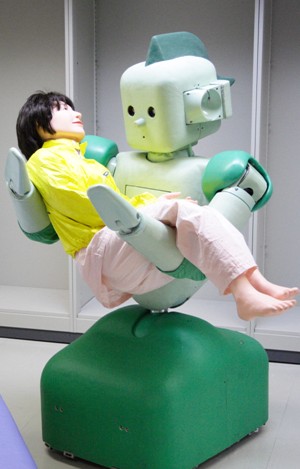 More details about
More details about 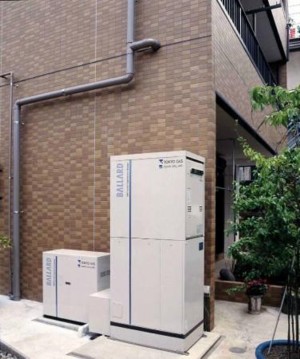
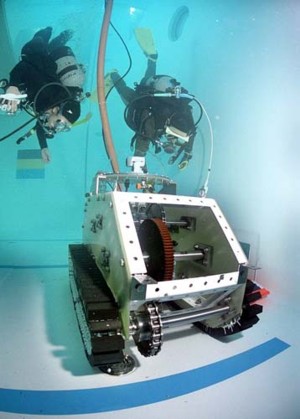 Robo-Fisher, a submersible robot designed to clean the floors of giant aquariums, is being developed by Osaka City University and eight private companies. Underwater operations were tested last week at a diver training pool in Osaka.
Robo-Fisher, a submersible robot designed to clean the floors of giant aquariums, is being developed by Osaka City University and eight private companies. Underwater operations were tested last week at a diver training pool in Osaka.
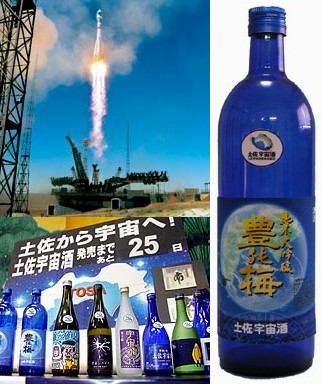 Final preparations are being made for the April 1 launch of Tosa Space Sake, a Japanese rice wine made with a batch of yeast that spent 10 days in space last October aboard a Russian Soyuz rocket. At a March 6 press conference held in Kochi city, the labels for the space sake, which will hit shelves across Japan next month, were displayed to the public.
Final preparations are being made for the April 1 launch of Tosa Space Sake, a Japanese rice wine made with a batch of yeast that spent 10 days in space last October aboard a Russian Soyuz rocket. At a March 6 press conference held in Kochi city, the labels for the space sake, which will hit shelves across Japan next month, were displayed to the public.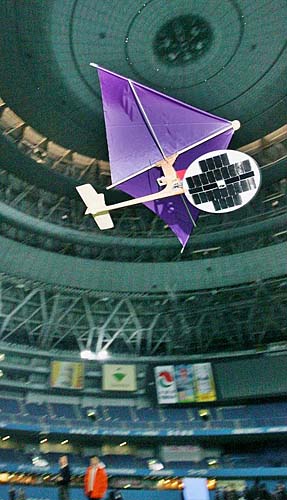 An unmanned aircraft powered by a ground-based laser was demonstrated at Osaka Dome on March 7. The aircraft is the work of a Kinki University research team led by Professor Nobuki Kawashima (aeronautical engineering). The researchers expect the aircraft to be used for gathering information in the event of a disaster.
An unmanned aircraft powered by a ground-based laser was demonstrated at Osaka Dome on March 7. The aircraft is the work of a Kinki University research team led by Professor Nobuki Kawashima (aeronautical engineering). The researchers expect the aircraft to be used for gathering information in the event of a disaster.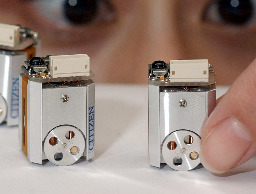 On March 6 in Osaka, Japan,
On March 6 in Osaka, Japan,